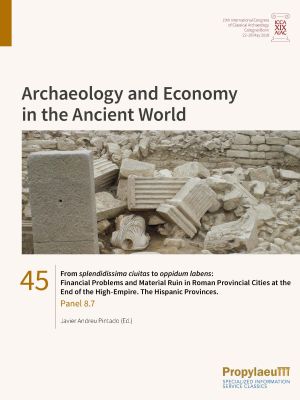
How to Cite
License

This work is licensed under a Creative Commons Attribution-ShareAlike 4.0 International License.
Identifiers
Published
From "splendidissima ciuitas" to "oppidum labens": Financial Problems and Material Ruin in Roman Provincial Cities at the End of the High-Empire. The Hispanic Provinces
Panel 8.7
Ancient Roman writers used to think of the Classical city as a durable, even eternal, structure and to recognize and underline its symbolic value as a reflection of the maiestas Imperii Romani and an image of the Romanization itself. On the other hand, different sources, from Pliny the Younger to the Historia Augusta, in addition to some inscriptions relate the weaknesses and problems of the local governments in maintaining the urban way of life and in supporting the financial system of those centres, in particular after the second half of the 2nd century AD, right before the much-discussed ‘crisis of the 3rd century’. This phenomenon turned many former splendidissimae ciuitates that possessed all the facilities and equipment of a Classical Roman city into oppida labentia, cities in decline and in process of abandonment. This exciting process is only visible through the appropriate analysis of the archaeological evidence. This book deals with some of the juridical, historical, institutional and political factors and facts, which can contribute to enlighten us about the elements of this decline of some of the small towns in the Roman West, in particular some paradigmatic evidence and case studies from Roman Spain.






